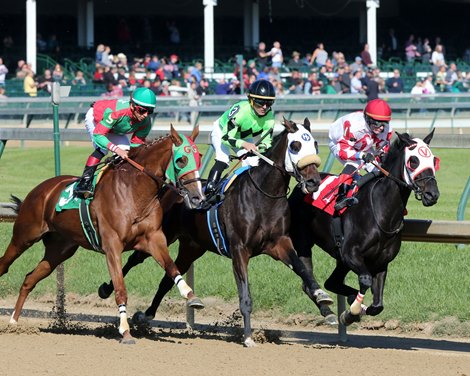An examination of three other major international jurisdictions suggests room for improvement in United States racing when it comes to equine fatalities during racing, although in some specific categories the U.S. is closer or comparable to other countries.
With a rash of equine deaths at the winter-spring meeting at Santa Anita Park bringing increased public scrutiny to the sport, BloodHorse reached out to several international jurisdictions to provide information on injury rates to allow for comparison.
Based on numbers from The Jockey Club Equine Injury Database in the U.S., the British Horseracing Authority, the Hong Kong Jockey Club, and the Japan Racing Association, the U.S. rates of equine deaths during racing are higher than Great Britain and Japan, and much higher than Hong Kong’s rate. Hong Kong is far and away the lowest among these four jurisdictions.
Britain and Japan provided detailed total numbers as well as numbers broken out by surface. The HKJC provided a single rate for 2014-2018 as well as its 2018 rate, both of which were 0.6 per 1,000 starts.
It’s worth noting that equine deaths during racing are rare in all four countries. For instance in Hong Kong, 99.94% of the starts are completed without such an incident. In the U.S. for the past five years on all surfaces, 99.83% of starts do not see such an incident.
When looking at such rare events, BloodHorse decided to examine the past five full years for which data was available to attempt to come up with meaningful numbers for comparison. As the 2019 numbers are not complete, BloodHorse examined the full years of 2014-2018.
For those five full years, the rate of such incidents in the U.S. was 1.67 per 1,000 starts, which is nearly three times higher than the 0.6 per 1,000 starts rate reported by the Hong Kong Jockey Club for those years. As noted, Hong Kong is far and away the safest among the four counties examined.
Still, the U.S. rate for the past five years also is 85% higher than the 0.91 per 1,000 starts rate reported by Great Britain in flat races; and 49% higher than the 1.12 rate for those years in Japan.
When racing surface is taken into account, the U.S. still lags although its turf racing numbers are closer to Japan. Again, looking at the years 2014-2018, but this time looking at only flat racing turf starts, the U.S. equine fatality rate is 1.31 per 1,000 starts; compared with 0.76 per 1,000 starts in Britain and 1.12 in Japan. The equine fatality rate on turf is 42% lower in Britain than the U.S. and 14% lower in Japan than the U.S.
Japan, which races on a dirt surface that is sandier than most U.S. tracks, reports a nearly identical breakdown rate on dirt as it does on turf. Looking at the years 2014-2018, it reports 1.13 equine fatalities per 1,000 starts. That is 59% lower than the U.S. rate of 1.82 per 1,000 starts on dirt.
Racing on all-weather tracks in the U.S. is on par with Britain. When comparing all-weather surface numbers from 2014-2018, the injury rate in Britain and the U.S. are nearly identical: 1.15 in Great Britain and 1.17 in the U.S.
The general trend over the past decade in the U.S. has been a reduction in such racing fatalities, typically caused by catastrophic breakdowns. The overall rate of 1.68 per 1,000 is down 16% from the 2.0 rate in the first year of the EID. The best year in that stretch was 1.54 in 2016.
In Britain, the British Horseracing Authority reports that such incidents have been reduced by a third in the past 20 years.
“As a consequence of British racing’s investment in safety, welfare, and health, the number of horses that have died on racecourses has decreased by one-third in the last 20 years,” the BHA reports on its equine health and welfare section of its website, referencing numbers that include jump races. “Despite British racing’s excellent safety record, we always strive to improve, constantly investing in welfare, research, and education.”

